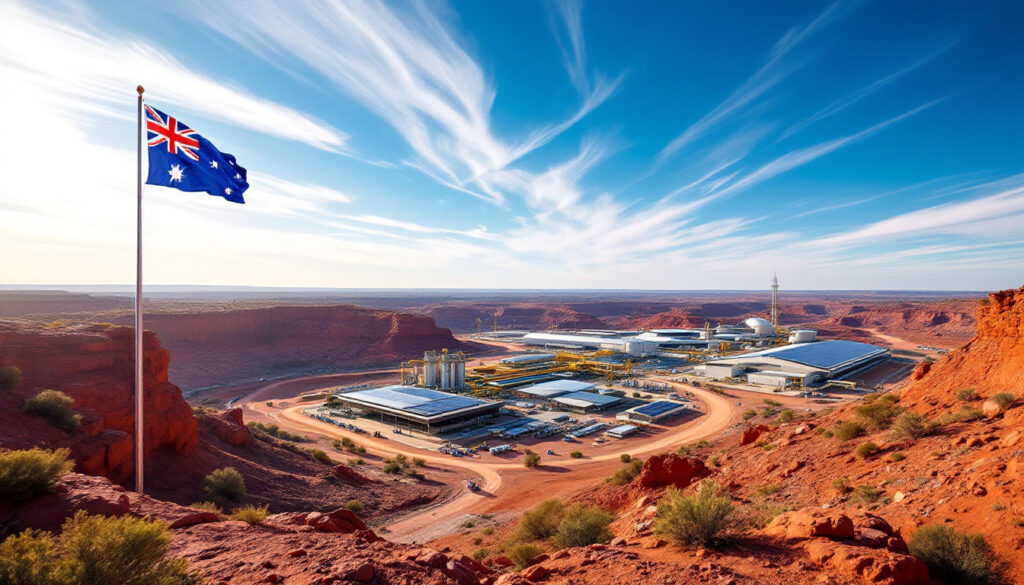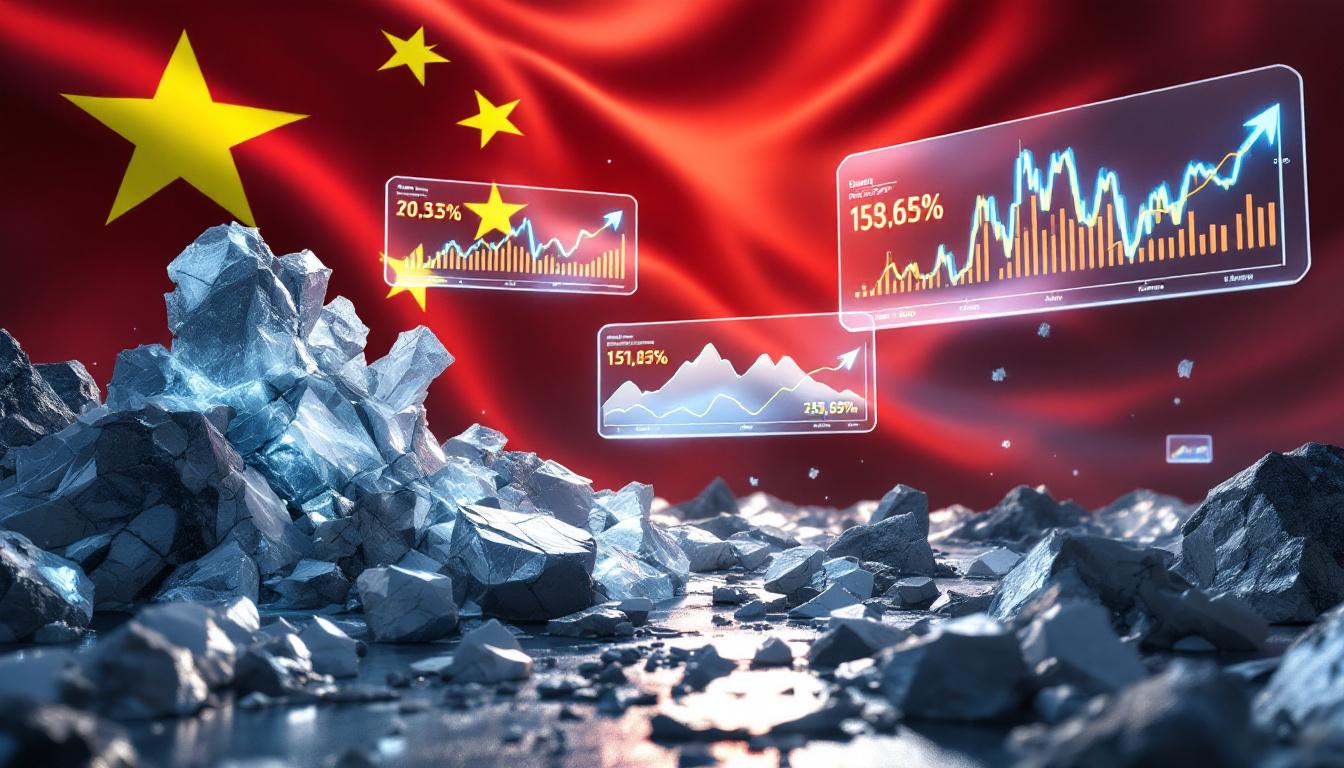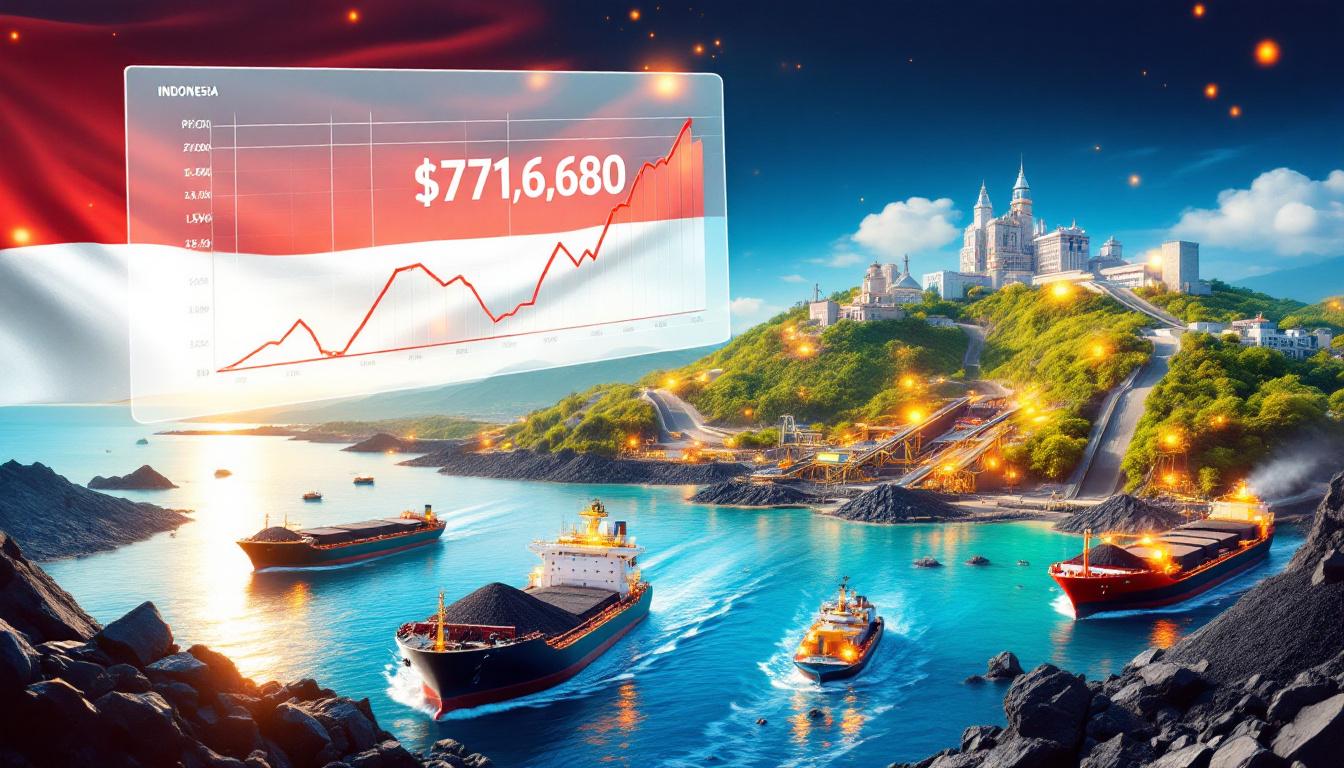Australia's Critical Minerals Strategic Reserve: Securing Economic Resilience
Australia's government has taken a bold step toward securing its economic future with the announcement of a Critical Minerals Strategic Reserve. This landmark initiative, backed by an initial investment of A$1.2 billion ($766.7 million), aims to capitalize on Australia's abundant mineral resources while ensuring domestic supply chain resilience. The reserve represents a strategic pivot in how the nation manages its valuable critical mineral assets, with operations expected to commence in the second half of 2026.
The Strategic Reserve will be complemented by a substantial A$1 billion increase to the existing Critical Minerals Facility, bringing its total investment to A$5 billion. Additionally, the A$7 billion Critical Minerals Production Tax Incentive will work alongside the reserve to create a comprehensive approach to critical minerals development and security.
Prime Minister Anthony Albanese emphasized the strategic importance of this initiative, stating: "The Strategic Reserve will mean government has the power to purchase, own and sell critical minerals found here in Australia… Australia will be able to call on an internationally significant quantity of resources in global demand."
Resources Minister Madeleine King highlighted the economic benefits for Western Australia, noting: "The Strategic Reserve shows the Albanese Government is taking the development of an Australian critical minerals industry seriously. And that means more investment and more jobs for Western Australia."
What Is Australia's Critical Minerals Strategic Reserve?
The New National Security Initiative
The Critical Minerals Strategic Reserve represents a paradigm shift in Australia's approach to resource management and national security. Rather than merely exporting its vast mineral wealth, Australia is implementing a strategic framework that involves national offtake agreements and selective stockpiling of minerals deemed crucial for both domestic security and global partnerships.
The reserve will specifically target minerals essential for advanced technologies, defense applications, and clean energy transitions. These include rare earth elements, lithium, cobalt, and other minerals facing growing global demand coupled with supply constraints. By securing these resources, Australia's lithium ambitions position the country not only as a supplier but as a strategic resource holder with enhanced geopolitical leverage.
Prime Minister Albanese described the initiative as "a national asset" that the government will deploy to "advance Australia's national interest." This positions the reserve as more than an economic tool—it becomes a pillar of national security strategy in an increasingly uncertain global environment.
Financial Investment Framework
The financial structure supporting the Critical Minerals Strategic Reserve is multifaceted and robust. Beyond the initial A$1.2 billion investment, the expanded A$5 billion Critical Minerals Facility will provide critical capital for developing new mining projects and processing capabilities. This substantial financial commitment signals Australia's long-term dedication to critical minerals as a strategic priority.
A key innovation of the reserve's financial model is its intention to generate cash flow through strategic market sales and transactions with allied nations. Unlike traditional strategic reserves that represent sunk costs, Australia's approach envisions an active management strategy that can potentially offset holding costs while maintaining necessary stockpiles.
The A$7 billion Production Tax Incentive further reinforces this framework by encouraging private sector investment in critical mineral extraction and processing. This three-pronged financial approach—direct investment, facility funding, and tax incentives—creates a comprehensive ecosystem to support the critical minerals supply chain from exploration to production.
Why Is Australia Creating This Strategic Reserve?
Geostrategic Considerations
Australia's decision to establish a Critical Minerals Strategic Reserve comes amid rising geopolitical tensions and increasing recognition of supply chain vulnerabilities. The initiative directly addresses concerns about mineral supply concentration, particularly China's mineral export restrictions which have heightened awareness of supply chain risks.
By creating this reserve, Australia aims to position itself to weather potential trade disruptions or market manipulations from a position of strength. The ability to call upon significant quantities of strategically important minerals provides both economic security and diplomatic leverage in negotiations with international partners.
Resources Minister King articulated this strategic vision clearly: "While we will continue to supply the world with critical minerals, it is also important that Australia has access to the critical minerals and rare earths we need." This balanced approach acknowledges Australia's role as a global supplier while prioritizing domestic resilience.
The reserve also strengthens Australia's value as a strategic partner for allied nations seeking to diversify their critical mineral supply chains away from geopolitical rivals. This positioning aligns with broader Western efforts to reduce dependency on potentially unreliable supply sources.
Economic Benefits and Opportunities
Beyond security considerations, the Strategic Reserve creates substantial economic opportunities for Australia, particularly for mineral-rich states like Western Australia. The initiative is expected to catalyze private sector development of critical minerals projects by reducing market uncertainties and providing pathways to guaranteed offtake.
The reserve complements the government's "Future Made in Australia" initiative, which aims to revitalize domestic manufacturing. Securing reliable access to critical minerals is essential for developing sovereign manufacturing capabilities in high-tech sectors like renewable energy, defense, and electronics.
Investment stimulated by the reserve is projected to create thousands of jobs across the mining sector, processing facilities, and related industries. According to a recent report from the Australian Financial Review, Western Australia, with its rich mineral endowment, stands to benefit significantly from this employment growth and economic diversification.
How Will The Strategic Reserve Be Implemented?
Governance and Development Timeline
Implementation of the Critical Minerals Strategic Reserve will be overseen by a dedicated taskforce charged with finalizing the reserve's scope and operational design. This taskforce will conduct extensive consultation with industry stakeholders, state governments, and international partners to ensure the reserve meets its strategic objectives.
The federal government will have unprecedented authority to purchase, own, and sell critical minerals extracted within Australian territory. This power represents a significant expansion of government involvement in the resources sector, traditionally dominated by private enterprise with limited state intervention.
The timeline for implementation envisions consultations and design work continuing through 2025, with operations commencing in the second half of 2026. This phased approach allows for careful consideration of market dynamics, international partnerships, and domestic priorities before full implementation.
Strategic Partnerships and Market Approach
Australia's Critical Minerals Strategic Reserve is designed to function within a network of international partnerships rather than in isolation. The reserve will enable strategic collaboration with key allies—likely including the United States, Japan, South Korea, and European partners—who share concerns about critical mineral supply security.
The market approach combines selective stockpiling of the most strategic minerals with active market participation. Unlike traditional stockpiles that remain static, Australia's model envisions dynamic management with the ability to purchase during favorable market conditions and sell when strategically advantageous.
The reserve will prioritize minerals with dual importance—those essential for both national security applications and economic development. For investors interested in this sector, a comprehensive mining stocks guide can provide valuable insights into potential investment opportunities arising from this strategic initiative.
What Are The Political Perspectives On The Initiative?
Government Support and Vision
The Albanese government has positioned the Critical Minerals Strategic Reserve as a cornerstone of Australia's economic security strategy. Prime Minister Albanese's framing of the reserve as a "national asset" elevates it beyond a temporary policy initiative to a fundamental component of Australia's strategic posture.
Resources Minister King has emphasized the initiative's importance for Western Australia's economy, connecting national security objectives with regional economic development. This dual framing helps build broader political support by highlighting both security and prosperity benefits.
The government has integrated the reserve within its broader critical minerals strategy, creating policy coherence across multiple initiatives. This coordinated approach demonstrates long-term thinking about Australia's position in global critical mineral markets.
Opposition Stance
Opposition leader Peter Dutton has proposed a significantly different approach, suggesting cuts to critical minerals sector assistance in favor of nuclear energy development. Specifically, his proposal would slash the Production Tax Incentives and the Critical Minerals Facility to redirect approximately A$600 billion toward financing a nuclear energy scheme.
This stark policy difference highlights the competing visions for Australia's energy and resource future. While the government focuses on critical minerals as a strategic asset for both traditional and renewable energy transitions, the opposition prioritizes nuclear power as its preferred energy solution.
The political debate around these competing priorities will likely intensify as the reserve moves from concept to implementation, with state governments, industry stakeholders, and voters weighing the relative merits of each approach.
How Does This Connect To Australia's Broader Critical Minerals Strategy?
Related Regional Initiatives
The Critical Minerals Strategic Reserve builds upon existing regional development initiatives, including the Cook Government's January 2025 announcement of funding for rare earth extraction research in Western Australia. This research initiative aims to establish a new rare earth province, potentially unlocking significant new mineral deposits to feed into the strategic reserve.
These complementary initiatives create a mutually reinforcing ecosystem of research, development, production, and strategic stockpiling. By addressing multiple points in the critical minerals value chain, Australia is developing a comprehensive approach to resource management that spans from geological discovery to strategic deployment.
Western Australia's prominent role in these initiatives reflects both its geological endowment and its strategic importance to Australia's mineral export economy. The state's existing mining expertise, infrastructure, and export facilities provide a solid foundation for expanding critical minerals operations, particularly as decarbonisation in mining becomes a greater focus for the industry.
Global Market Positioning
The Strategic Reserve positions Australia as a secure and reliable supplier in increasingly competitive critical minerals markets. As global demand for these minerals continues to grow—driven by clean energy transitions, defense technologies, and digital transformation—Australia's strategic approach enhances its market power and negotiating position.
By addressing growing international concerns about critical mineral supply chain security, Australia establishes itself as a preferred partner for nations seeking to reduce vulnerability to supply disruptions. This positioning creates opportunities for preferential trade agreements and strategic partnerships that extend beyond mineral sales to broader economic and security cooperation.
The reserve also creates a potential model for other resource-rich nations to manage strategic minerals in ways that balance commercial interests with national security imperatives. For those interested in broader market impacts, global commodities insights can provide context on how Australia's approach might influence international resource governance.
FAQ: Australia's Critical Minerals Strategic Reserve
What minerals will be included in the Strategic Reserve?
While the government has not published an exhaustive list, the reserve will focus on minerals crucial for Australia's national security and that of key partners. These likely include rare earth elements (particularly neodymium, praseodymium, and dysprosium), lithium, cobalt, nickel, graphite, and other minerals essential for defense applications, clean energy technologies, and advanced manufacturing. The specific composition will be determined through the taskforce consultation process based on supply risk assessments and strategic importance.
How will the reserve affect mining companies operating in Australia?
The reserve is expected to provide greater market stability and potential guaranteed offtake agreements for mining companies developing critical mineral projects in Australia. This reduces investment risk and could improve project financing conditions. Companies producing targeted minerals may benefit from more predictable demand patterns and potentially premium pricing for strategic reserves. The initiative creates a more favorable environment for developing projects that might otherwise struggle to secure investment due to market volatility or geopolitical concerns.
When will the Strategic Reserve be operational?
According to government announcements, operations are expected to begin in the second half of 2026. This timeline allows for thorough consultation, establishment of governance structures, and development of operational protocols. The phased implementation may see initial acquisitions of the most strategically urgent minerals, followed by broader stockpiling as the reserve reaches full operational capacity.
How does this initiative compare to similar programs in other countries?
Australia's Critical Minerals Strategic Reserve represents a more comprehensive approach than most international counterparts. While the United States maintains a National Defense Stockpile and Japan has its JOGMEC stockpiling program, Australia's initiative is distinctive in combining stockpiling with active market participation and integration with broader economic development strategies. The reserve's design allows for greater flexibility in responding to market conditions while maintaining strategic reserves, positioning Australia as a leader in critical minerals security approaches.
Want to Capitalise on the Next Major Mineral Discovery?
Stay ahead of the market with Discovery Alert's proprietary Discovery IQ model that instantly notifies you of significant ASX mineral discoveries, transforming complex data into actionable investment opportunities. Discover why major mineral discoveries can lead to substantial returns by exploring our dedicated discoveries page and begin your 30-day free trial today.




